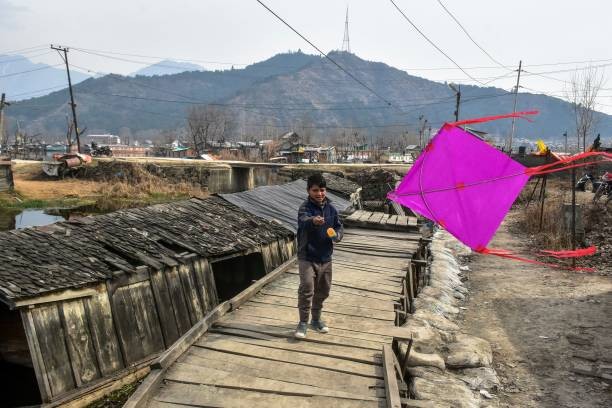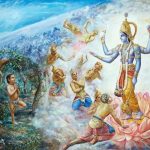Know How India Celebrates Raksha Bandhan
Nobel Prize winner and India’s most respected as well as highly regarded poet, author, painter Rabindranath Tagore has written a wonderful poem that explains the purpose of Raksha Bandhan and it is all the more meaningful.
Gurudev Rabindranath Tagore invoked the spirit of Raksha Bandhan to espouse the cause of Hindu- Muslim unity.
“The love in my body and heart
For the earth’s shadow and light
Has stayed over years.
With its cares and its hope it has thrown
A language of its own
Into blue skies.
It lives in my joys and glooms
In the spring night’s buds and blooms
Like a Rakhi-band
On the Future’s hand,” wrote the Nobel Laureate when the British Government partitioned Bengal in 1905 to communalise the country and pursue their policy of divide et impera.
Raksha Bandhan or Rakhi is primarily an Indian and Nepalese festival centred around the tying of a thread on the wrist as a form of symbolic protection. This ritual is one principally between brothers and sisters and observed both before and after the sister gets married, signifying a lifelong relationship.
To be honest it is not as if brothers go into war or that women are not capable of fending for themselves, but the festival and the ceremonies associated are a beautiful reminder of the lovely bond that siblings share.

In Jammu, Raksha Bandhan is celebrated in quite a different manner. It’s just like the Kite-Flying festival! The kite flying begins almost one month before the festival and the locals enjoy the festival thoroughly. It’s not just the small traditional kites but kites of all shapes, colours and sizes are used. The locals use a special string for flying the kites.
In West Bengal and Odisha, it is not just the Rakhi tying festival but Lord Ram and Seeta are worshipped. The day begins with visits to the temple where Ram and Seeta are prayed to and then, the siblings celebrate the festival. The name for Raksha Bandhan is different oo! It is called Jhulan Purnima in both the states.
In the Kumaon region of Uttarakhand, the men change their Janaeu threads (sacred threads worn around the torso) on this day. It is festival not just for siblings but even for all brothers and sisters. The Raksha Bandhan festival is called by the same name but the festivities are different. There’s also a fair that takes place in Champawat for the day.
In Maharashtra and the coastal regions of Western India, the festival is called Naarali Poornima and is celebrated by worshipping the sea. The fisherfolk, who are predominantly the occupants of the region throw coconuts into the sea as offerings to the sea. This is also the day coconut based sweets and dishes are cooked. The traditional Raksha Bandhan is celebrated after the sea-worship.
In Nepal, the festival is celebrated similar to Uttarakhand. The festival itself is called Janaeu Purnima and it is not just celebrated among siblings but all family members. The people pray to Shiva and offer their obeisances. All the elder members of the family and visiting relatives tie threads to each other and the younger family members on their wrists. The men also change their Janau and hance, the name. Nepalese celebrate the festival by having Kwati, a special preparation made of 7 grains.
In Madhya Pradesh, Chhatisgarh and some parts of Uttar Pradesh, it is not Rakhi or Raksha Bandhan that is celebrated but another festival by the name of Kajari Purnima that is celebrated. Kajari Purnima is the festival of farmers and for mothers. Farmers worship their land and mothers only with sons (quite a sexist ritual, this) perform a special pooja. The festivities begin almost a week before Kajari Purnima. The farmers wives go to their fields and bring back some soil from the fields in leaves. The soil is then planted with barley and kept in one part of the house which is completely scrubbed and decorated. After 7 days, the put is taken and submerged in a well or the river by the women while praying for the longevity of their sons.

In Tamil Nadu and Kerala, Avani Avittam is celebrated in parts of Southern India on the full moon night during the month of Shravan. The festival is for all the male members in the family. The Brahmins mostly celebrate the festival where they take a dip in the water and ask for the atonement of all their past sins. After the ritual, the holy thread or the Janau that is tied across the body is changed and they wear a new one. While changing the thread, they promise to be good and perform good actions the coming year. On this day, scholars also commence the reading of the Yajur Veda which is then carried on for the next 6 months.
In Gujarat, the festival of Pavitropana along with the festival of Raksha Bandhan is celebrated. Both festivals are celebrated on the same day. Women worship Lord Shiva and pour water on the Shivlinga. They visit temples and ask for forgiveness of their past sins.
Must Read : Raksha Bandhan & Indian Mythologies
Must read he True Meaning Of Rakshabandhan : Sri Sri Ravi Shankar








